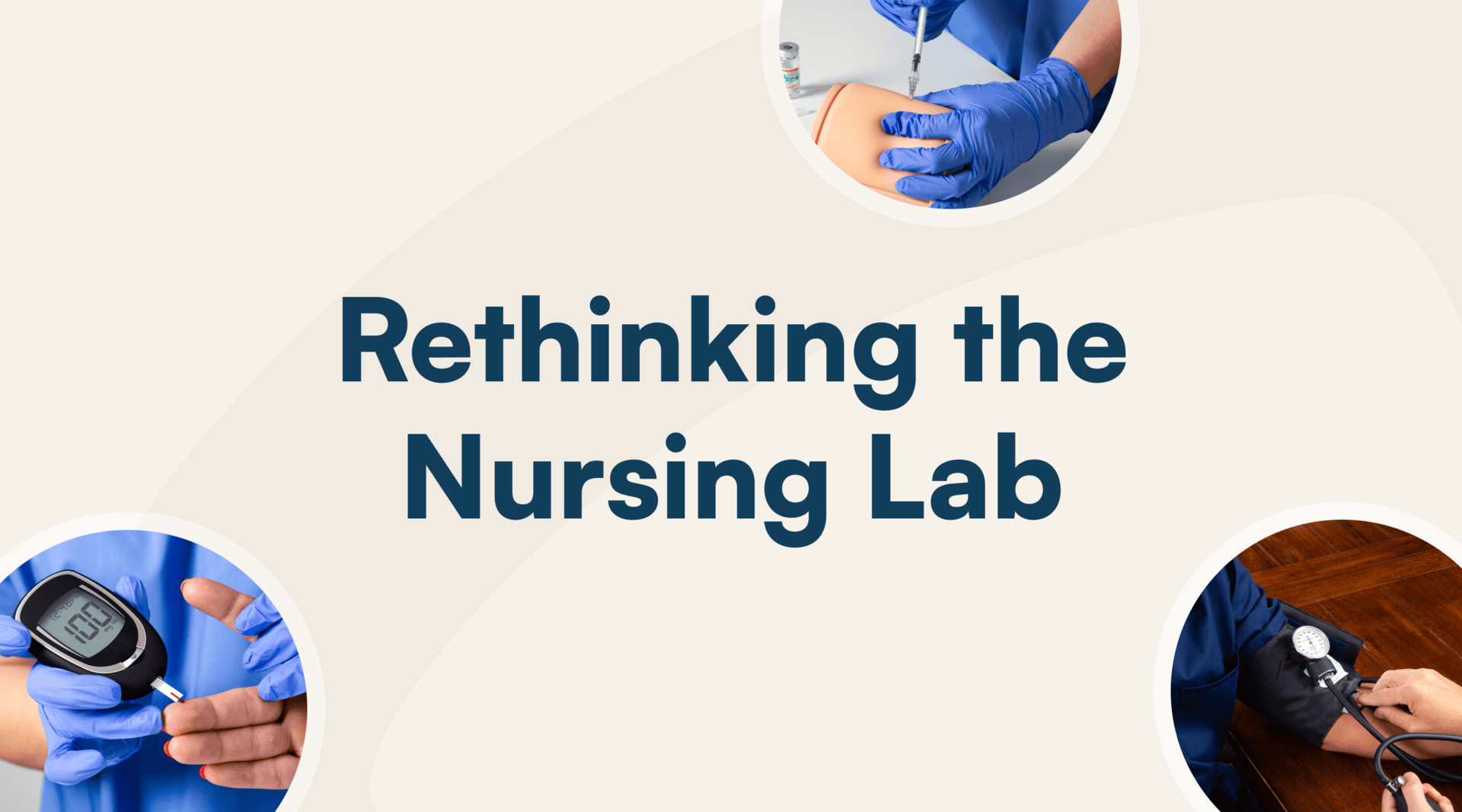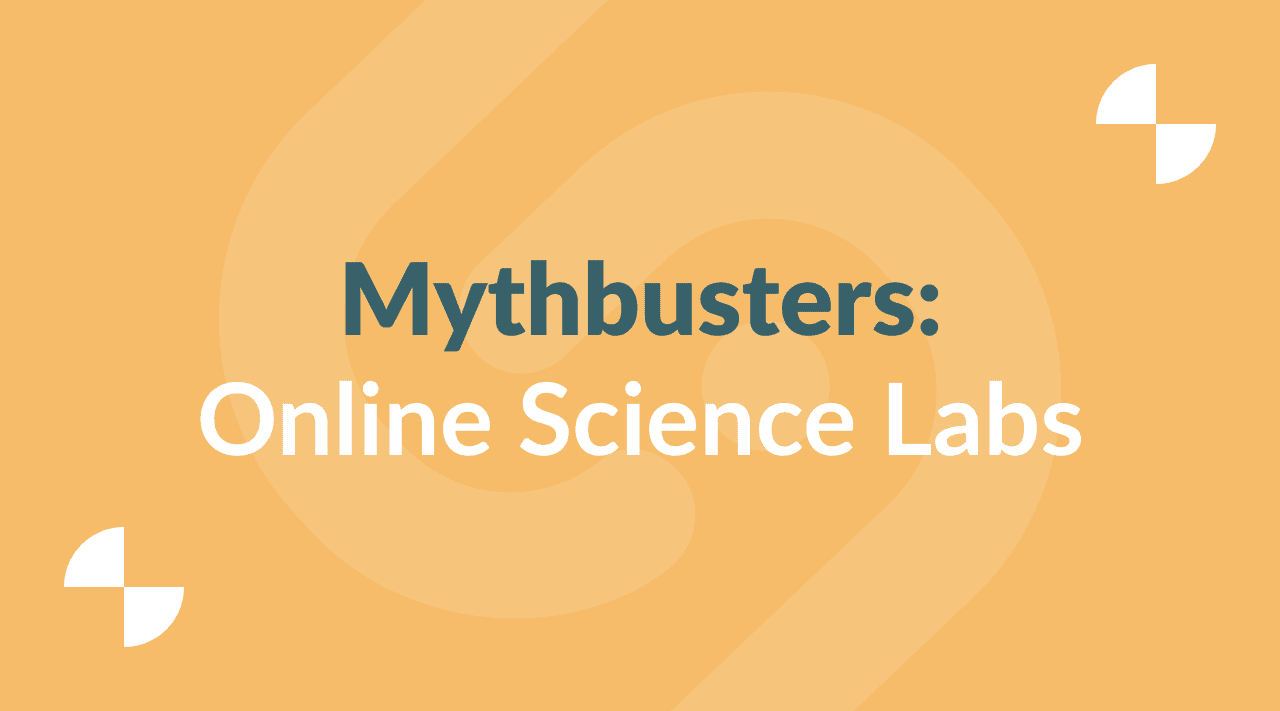It’s true. Learning is a social process, and there’s no better feeling than seeing that ‘aha’ moment wash over a student’s face at the end of a lab. That said, with some shifts and adaptations, online science courses with labs can be just as effective. In fact, as crucial as face-to-face time is during on-campus labs, the truth is that many students rely on distance education and online courses — including online science labs — to gain new skills, advance their careers, and pursue degrees.
Amid stagnant or sharply declining enrollment in traditional F2F programs, roughly 24% according to the CHLOE 8 report, data show student demand for online (36%) and hybrid (20%) learning continuing to grow. Coupled with the U.S. Bureau of Labor Statistics’ 10.8% projected growth in STEM occupations, it only makes sense to shift science courses online—serving to expand access and increase enrollment. So if you’re still hesitating to make that shift, we’re here to tackle some of the common misconceptions, concerns, and downright myths that just might be holding you back.
Myth 1: You can’t ensure the same quality & rigor as on-campus labs.
Bust That Myth: One of the biggest concerns around online science labs is that students won’t gain the same hands-on laboratory experience as their on-campus peers. In fact, 26% of instructors say ensuring the quality and rigor of their course is one of their biggest challenges. The good news is that there are a wide variety of ways to deliver online science labs, all of which vary in quality and effectiveness.
The kind of labs you use actually end up playing a key role in the quality and effectiveness of these courses. In fact, according to our Annual Lab Report — which surveyed more than 1,600 instructors and students — 84% of instructors said they prefer incorporating hands-on labs into their online courses because it supports a higher quality experience similar to the on-campus lab. Students agree. 71% said their hands-on labs at home were comparable to an in-person lab experience. Add to this that both groups agree that hands-on labs provide students with better opportunities to learn the knowledge and skills they need to pursue additional coursework, it’s not surprising to find that nearly ¾ of students and instructors feel that at-home hands-on labs create an experience comparable to an in-person lab experience.
With hands-on labs, instructors provide a more interactive experience that more deeply engages learners. In fact, the majority of instructors indicate that including a hands-on component supports better outcomes and leads to a higher quality learning experience, in which students can apply what they learned to the real world, just like this student:
“The at-home labs were fantastic! My instructor helped us feel like we were in a school laboratory, and the entire hands-on kit allowed me to gain greater confidence as a pre-veterinary medical student. For example, when my dog was having procedures done, my lab work helped to better understand all of the work being carried out by his medical team, which cemented my goal of being a veterinary doctor. The neurologist was surprised by my understanding, and this course no doubt helped me.”
And scientists agree. Research by the American Chemical Association shows that hands-on experiences in science help students develop critical thinking and problem-solving skills they need to succeed in any career, which is why hands-on labs at home are critical for replicating the quality of on-campus labs.
Myth 2: But choosing between virtual and hands-on labs is like being stuck between a rock and a hard place.
Bust that Myth: It’s an age-old debate in the world of online science labs: virtual science labs vs hands-on labs. The good news? We can finally put the debate to bed.
Based on our annual survey, it turns out that the most effective online lab courses use both!
Virtual labs and hands-on labs are beneficial in certain circumstances and should be used TOGETHER in an online lab course—and here’s why.
The virtual labs gave us a chance to do experiments over and over again, until they were clearly understood. That was a great advantage.
– Student response, 2023 Annual Lab Report
I really enjoyed doing the at-home hands-on labs for my biology class. It made it fun and so that I wasn’t 100% glued to the computer. Being a distance learning student, completing labs at home is very important to my degree progress and success.
– Student response, 2023 Annual Lab Report
If you want to introduce basic concepts, prepare students using pre-labs before on-campus labs, provide a low stakes environment for students to repeat experiments to reinforce key concepts, and build an engaging, interactive online lab course that’s comparable to the in-person lab — then don’t choose — use both! In fact, creating the right mix of virtual science labs and hands-on labs can improve the quality of courses.
That said, as an increasing number of students continue to evaluate online programs and discern what kind of experience they’re looking for, lab format is becoming a key consideration. While most students had a positive experience overall, regardless of lab format, the majority were actually looking for courses with hands-on components, which could serve to further differentiate your online science offerings and increase their effectiveness.
80% of students said they wanted a hands-on component, compared to only 20% who preferred virtual simulations only. Interestingly, the majority of students who only participated in virtual simulations during their online science course said they would have felt more prepared and confident in the skills they learned had they had more hands-on experience. This is an important point…when relied on as the sole format for conducting labs, virtual simulations on their own often fall short — which is why adding hands-on experiences is key.
In fact, 82% of instructors say students learn more with hands-on labs. As Lauren Kerrigan, Chemistry Instructor at Bucks County Community College shared, “Using hands-on experiments gives me the opportunity to provide my online students the same type of experience that a typical student that’s coming to the campus would have. This gives them the hands-on experience they need to ensure their credits are transferable while providing them with the flexibility to do the labs from their own home.”
Myth 3: But don’t hands-on labs end up being too expensive for students?
Bust that Myth: Sure, hands-on labs have a cost. In fact, 22% of instructors cite cost as the reason they don’t adopt hands-on labs. But truth be told, most online courses have some kind of fee associated with it, whether it be for certain technology or other materials, as do on-campus lab courses.
However, cost should not be a deterrent if you’re thinking about shifting lab courses online. The majority of instructors who opt for hands-on labs thought the cost was commensurate with the value of the experience. In fact, both instructors and students were aligned when it came to the value and effectiveness of doing hands-on lab experiments at home. Nearly 75% of students said the cost of the hands-on labs was aligned with the value received. Cost aside, both groups agree that students learn more when they do hands-on labs at home.
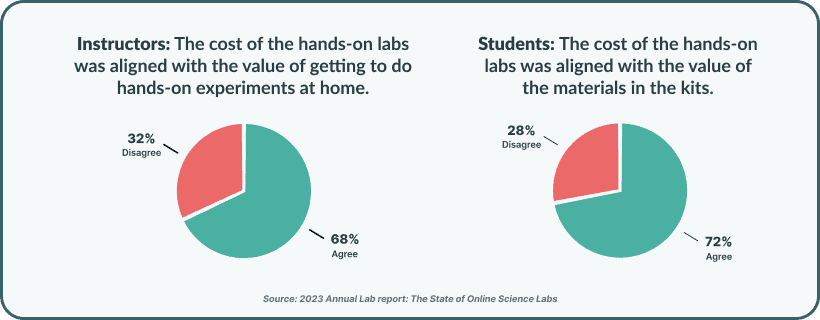
It’s also important to look at the total picture. As Professor of Chemistry Dr. Ryan Fealy notes, “We really try to keep costs down, and for students taking online labs, there is a slightly higher cost, but they’re also not burning gas for a commute or having to buy lunch. It does balance out, and they’re investing money in a truly valuable experience.”
So when you consider the full cost of attending on-campus lab courses for both students (commuting, opportunity costs, child care, etc.) and programs (lab space cost, resources, and sourcing lab materials), hands-on labs done at home can prove to be more cost effective. But if cost is still a hang up, consider different options for offsetting those costs, including shifting to open source textbooks, using a lab fee, and incorporating some virtual lab simulations where it makes most sense.
Myth 4: Aren’t hands-on labs too risky when it comes to ensuring student safety?
Bust that Myth: We know incorporating hands-on labs into online curriculum can be challenging, and you might hesitate because instructors can’t be onsite to provide the same kind of supervision as they would on campus.
To ensure student safety, consider choosing a partner whose hands-on lab development and testing process is rigorous. The process should be built around the idea that instructors can’t be right next to your students when they perform experiments. These 5 principle areas are key to keeping students safe:
- Training: Mandatory lab safety lessons and student training before accessing course content.
- Preparation: In-depth instruction for students about preparing their home lab area and recommendations for adjusting experiments based on materials and space.
- Guidance: Giving clear, thorough, accessible safety guidance for each experiment
- Equipment: Providing PPE and instructions for handling and cleaning all lab equipment
- Microscaling: Using microscale quantities of chemicals to enhance safety
“These five areas form the foundation of our approach to safety,” said Cait Runne-Janczy, Chief Academic Officer for Science Interactive.
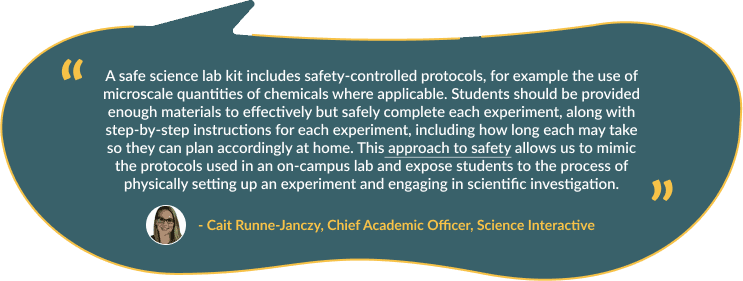
Myth 5: Online science labs are hard & time consuming to implement.
Bust that Myth: Many instructors have approached hands-on labs by having students source materials. Sometimes, even the instructor will source materials and prep kits. However, both approaches require ample amounts of time and neither deliver the level of quality needed. But with the right partner, you can eliminate those challenges. There are partners who have developed purpose-built curriculum and kits that make this easy.
For example, Science Interactive enables instructors to deliver lab science courses online that are just as rigorous and high quality as on-campus lab courses, using digital or virtual labs and ready-made hands-on lab kits for hands-on labs. We work directly with suppliers to source high-quality lab grade materials, and are able to purchase these in bulk to make it more cost effective for our customers. Plus, with the flexibility to ship kits to your bookstore or directly to students within days, your instructors don’t have to handle any messy logistics or coordination. We have an entire team available 7 days a week to support instructors and students — which gives you back valuable time.
We also take on the rigorous development of curriculum to ensure quality. Our team of PhD scientists develop each lab, which then goes through a series of reviews and quality assurance tests, which has resulted in all 11 disciplines achieving certification from Quality Matters.
Finally, the lab management platform used to deliver course material should have features and tools that make your instructors’ lives easier. From auto-grading multiple choice questions to the ability to deliver feedback to students on their performance directly and monitor student engagement, everything is captured in one platform that integrates seamlessly with your Learning Management System. This cuts out all of the manual, time-consuming, and trivial tasks you wouldn’t want your instructors focusing their time on anyway.
Myth 6: It’s way too easy for students to cheat.
Bust that Myth: It may not surprise you to learn that in a study from Marshall University, 33% of students surveyed admitted to cheating in an online course, and according to OnlineCollege.org, 55% of college presidents said plagiarism has increased in recent years, most likely due to students’ increased access to online resources. To further reinforce those facts, ensuring academic integrity in online labs also ranked in the top 3 challenges for instructors. Let’s face it. Cheating occurs whether students learn online or in the classroom, and in online courses, it just might be easier than ever, especially if you only rely on virtual simulations.
But this doesn’t mean you can’t preserve the quality of online lab courses. Using hands-on labs is one way to curb dishonesty. You can’t wing it in hands-on online labs, nor complete them dishonestly, and still expect to learn the material, pass the evaluation, or get a good grade.
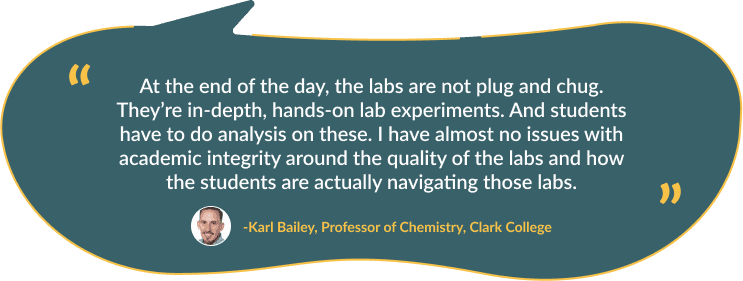
Further, an online lab management platform can help you prevent academic dishonesty. When you deliver the content via a digital platform, it makes it harder to share that content on cheating platforms, in comparison to the standard PDF which makes it much easier to download and share across. With a lab management platform, you can also require students to take photos and videos of their work during hands-on labs. Here are some key ways to ensure academic honesty.
- Update assessments: If grades start showing patterns in a way that becomes suspicious — and you’ve taught the course before — it could be that your assessment is being shared from a previous class. Create different versions of assessments to reduce the chance of students copying others’ work.
- Change the experiments: Change the order of experiments for students in a class and between terms to keep the data real.
- Create a safe space for students: Your interactions with students will set the tone for the course. Just like in-person courses, students need detailed feedback, and your discussions and feedback engage them in the experimentation process and let them know their work is important. Set a clear timeframe in which student issues are addressed, and when they can expect feedback and grades — all of which can help decrease student anxiety and improve morale.
- Finally, require student evidence of participation: Have students use the lab management platform to introduce themselves through pictures or video as they unpack their laboratory kits. During the investigations, have each student produce a live video feed while doing the work or take pictures of key steps. Students should prepare detailed lab reports, describing exactly what they did. These steps will not only promote academic integrity but will also help you troubleshoot or correct any experimental mistakes.
We understand how frustrating enforcing academic honesty can be, which is why we have a task force at Science Interactive dedicated to academic integrity, which regularly checks sites that are used for plagiarism and proactively pulls down our content to prevent sharing.
Shifting to Online Science Labs Reaps Benefits
Trends remain clear; many students are prioritizing online learning, and it’s an opportunity for colleges and universities to not only increase student enrollment but to expand access to science education for students who otherwise might not pursue it. Take the University of California’s San Diego Division of Extended Studies for example. When they began delivering high-quality online science classes with labs within their Science & Sustainability programs, the division experienced enrollment gains of up to 8,000 students per year.
Still, while certainly valid, concerns around student safety, the quality of the learning experience, or the lift required to implement online science labs no longer have to create stumbling blocks for you. With the right partner, you can use both hands-on lab kits along with digital science labs to provide the most authentic and cost-effective online lab experience possible. Plus, those kits come with the highest quality digital science curriculum available — more than 450 hands-on and virtual lab lessons across 11 different Quality Matters-certified disciplines.
With the tools and resources now available, you can power an authentic, real-world lab experience for students at home. For more myths busted, watch our recent mythbusters webinar, and if you’re looking to expand access to your science offerings and bring the same quality and rigor of your on-campus labs online, we can help.
Source: Annual Lab Report: State of the Online Science Lab in 2023
Infographic

Discover more articles
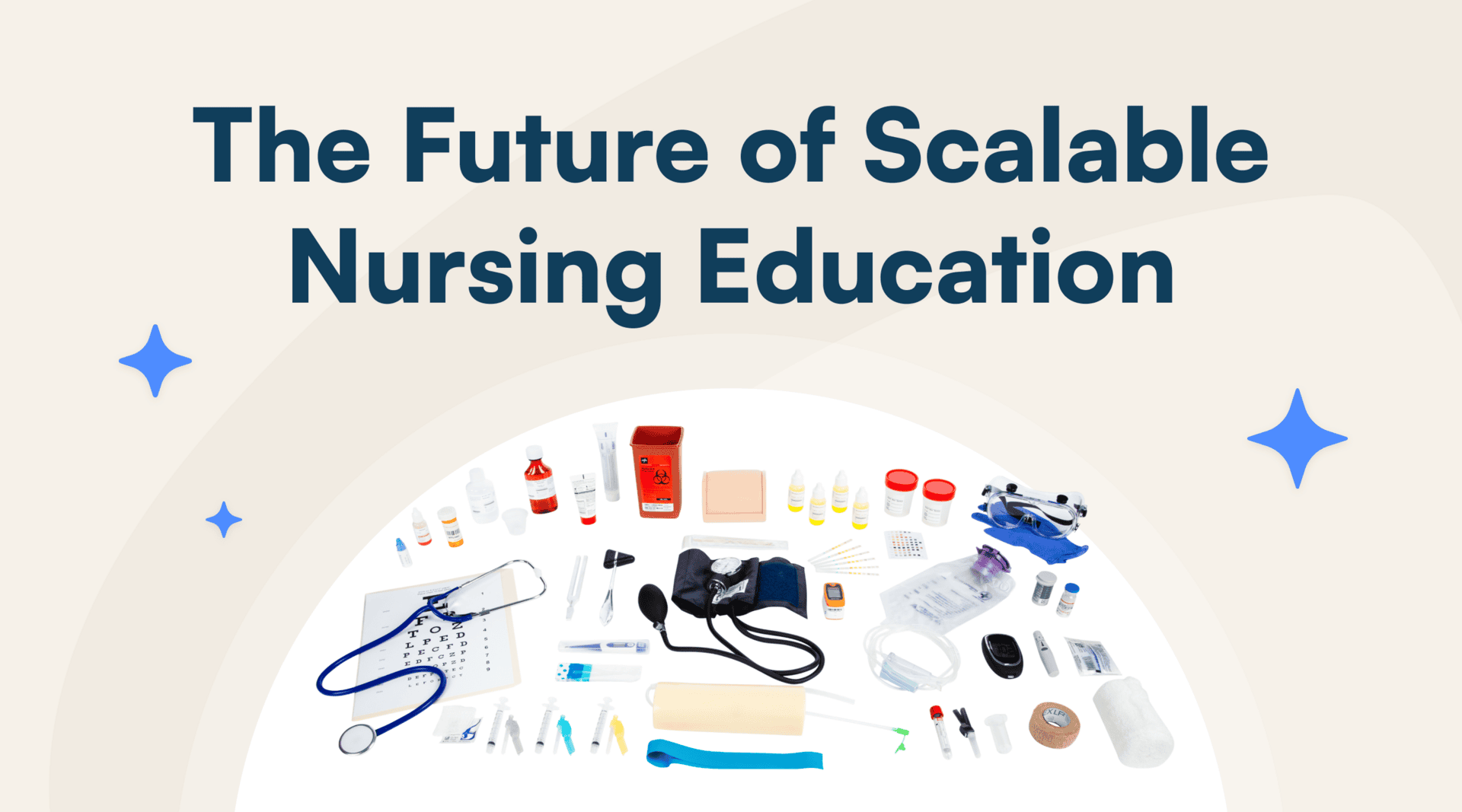
Science Interactive Launches New Nursing Fundamentals
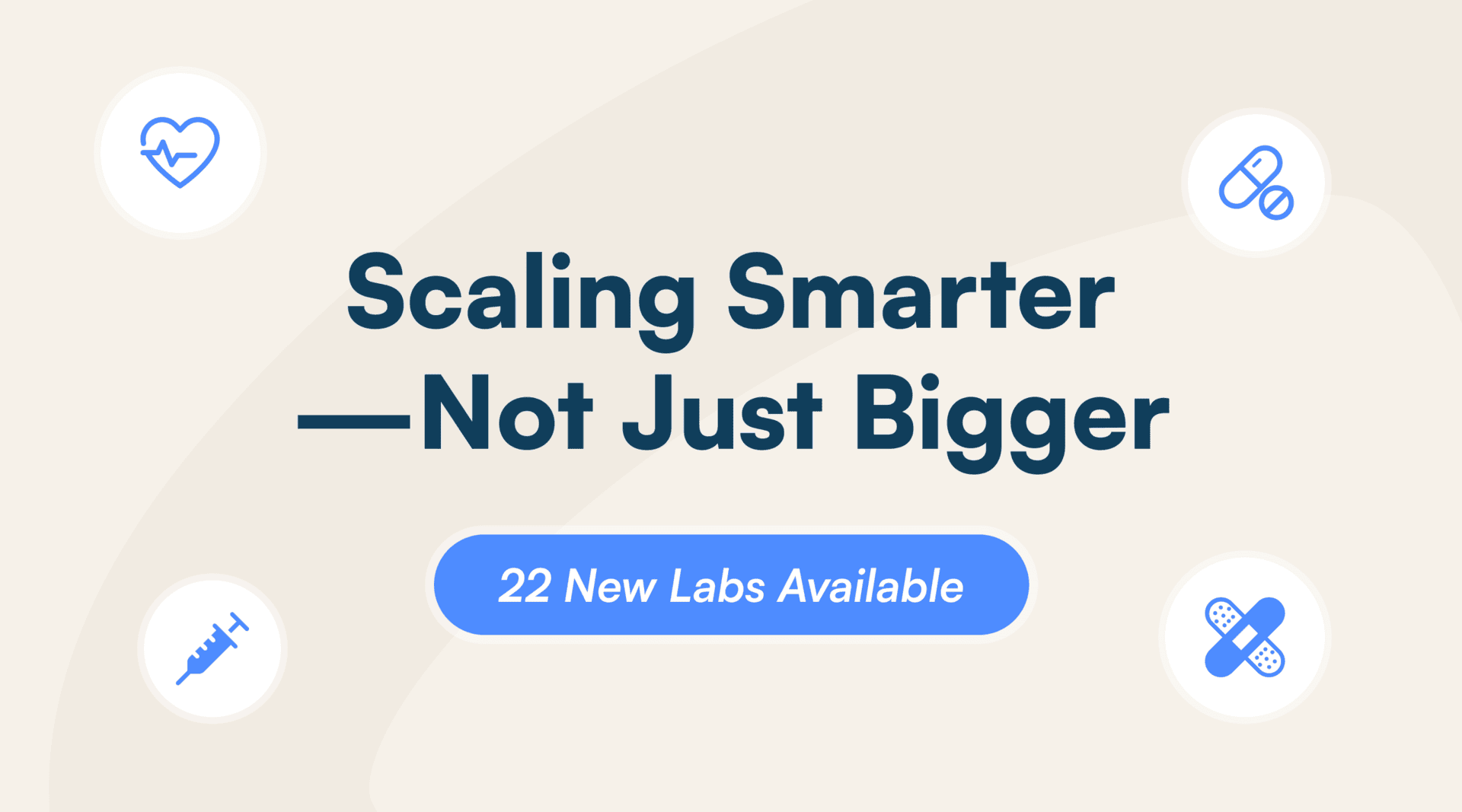
What Clinical-Ready Actually Looks Like (And How to Get There Sooner)
